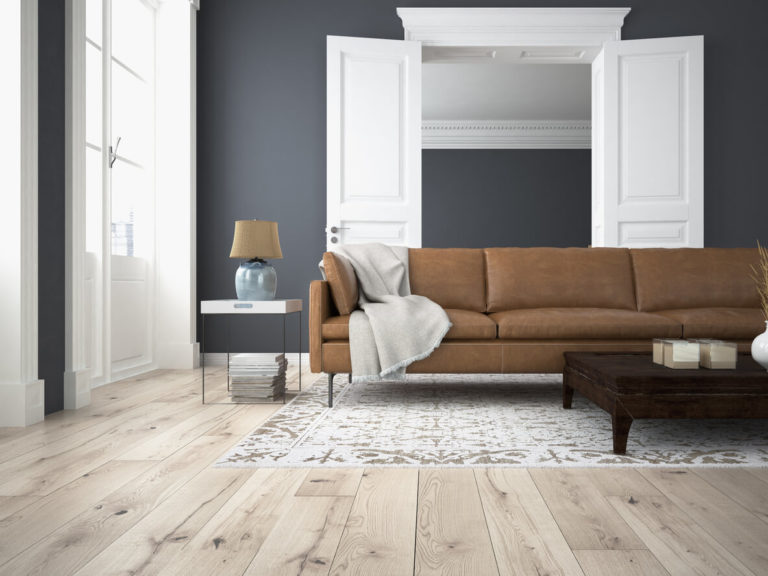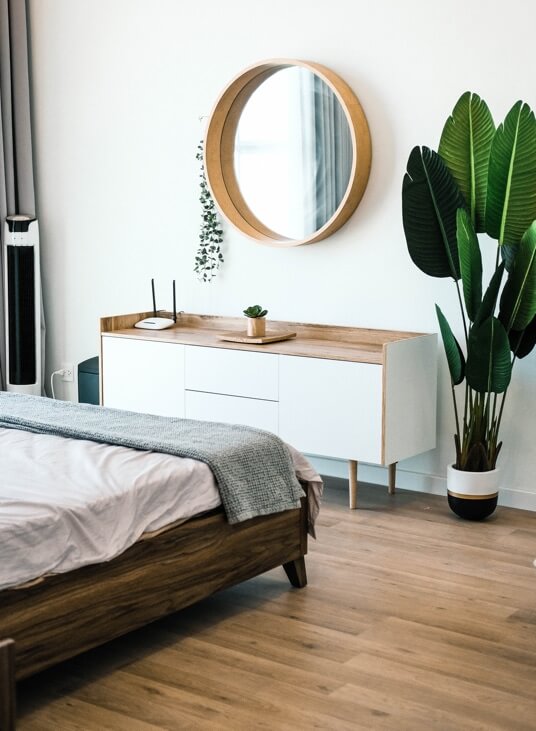Keeping Up With Home Staging
& Interior Design Trends
In this ever-changing world, our homes have evolved into more than just living spaces – they’re now centers for work, health, and relaxation. This shift has brought interior design and home staging to the forefront, transforming them into essential elements of our daily lives. We’re all adapting to a new normal where our homes are our mainstays, and this is profoundly influencing how we design and style these spaces.
This exciting transformation is driven by several key factors. Technological advancements are opening up new possibilities in design, making our homes smarter and more connected. There’s a growing emphasis on sustainability, prompting us to think carefully about the materials we choose and the footprints we leave. Changing consumer behaviors are guiding new design trends, reflecting our evolving needs and preferences. And, economic shifts are influencing market demands, making us rethink how we value and use our personal spaces.
In this article, we’ll delve into the latest trends shaping the industry and peek into what the future might hold. It’s a fascinating time to explore how our living spaces are transforming

The Impact of Technology on Home Staging and Interior Design
Technology is giving a fresh face to home staging and interior design. Cutting-edge tools are revolutionizing the industry, letting us reimagine spaces like never before.
Virtual Reality: Immersive Experiences
Virtual Reality (VR) has transitioned from a futuristic concept to a practical tool in home staging and interior design. It offers an immersive experience, enabling potential buyers or renters to virtually tour properties from anywhere in the world. This technology is particularly revolutionary because it allows individuals to walk through spaces, inspect details closely, and even observe natural light changes throughout the day. VR tours can be especially appealing for remote buyers or for previewing properties under construction.
AI-Driven Design Tools: Smart Styling
Artificial Intelligence (AI) is making its mark in the world of interior design, and it’s pretty exciting! Imagine having a smart assistant that gets to know you – your tastes, your lifestyle, and even those little quirks that make you unique. That’s what AI is bringing to the table. These clever AI tools sift through your preferences and needs, offering personalized decor suggestions that really speak to who you are.
What’s fascinating is how these tools learn from patterns in data to get a sense of your style – sometimes they might even surprise you with insights about your tastes that you hadn’t realized yourself! This means you get design recommendations that are spot-on and tailored just for you. It’s like having a personal stylist for your home, one that understands your life and helps you make your space truly your own. This tech is changing the game in how we decorate our spaces, making it a lot more personal and a lot more fun.
Smart Home Technology: Function Meets Design
Smart home technology is changing the game when it comes to how we think about our homes. It’s like we’re living in the future where our homes are not just about looking good, but also about being super functional and smart. As more cool tech gadgets make their way into our homes, interior design is stepping up to the challenge. It’s all about finding clever ways to make these gadgets blend in beautifully with our decor, so our homes look amazing and work like a dream.
This includes considering the aesthetics of hiding tech components (e.g., hiding wires) and ensuring that devices are both functional and complementary to the overall design theme. Smart home technology is redefining the concept of a modern home, where aesthetics and functionality coexist harmoniously
This whole shift is shaking things up in interior design and home staging. We’re seeing this mix of beauty and brains in homes, where everything looks great and works seamlessly. It’s opening up a whole new world of design that’s not just about how things look, but also about how they work for us in our everyday lives. It’s pretty amazing to think about where this could take us in the future!
Consumer Behaviour Trends in Home Staging and Interior Design
One significant trend has been the rise in demand for multifunctional spaces. As more people are still working from home due to changes over the past years, consumers are increasingly seeking multifunctional spaces that can serve as a home office during the day and transform into a comfortable living area in the evenings. This has led to innovative designs that cleverly integrate workspaces into living areas without compromising the aesthetic or functionality of the space.
Designers are incorporating elements like fold-away desks, soundproofing for video calls, and comfortable seating that can transition between work and relaxation.
Demand for Personalized Spaces
Personalization in interior design has become paramount. Consumers are now more interested in creating spaces that reflect their personality, interests, and life stories. This demand goes beyond mere functionality, extending into unique aesthetic choices. Social media platforms like Instagram and Pinterest have played a crucial role in this trend, exposing individuals to a vast array of design ideas and encouraging them to seek unique, personalized styles.
This shift has led to an increase in custom-made furniture, unique colour palettes, and the incorporation of personal artifacts and art in interior designs.
Eco-conscious Choices
Environmental sustainability has become a significant consideration in home staging and interior design. Consumers are increasingly opting for eco-friendly options, from sourcing local, sustainable materials to integrating energy-efficient appliances. This green approach extends beyond new constructions; it includes renovating existing spaces with a focus on minimizing environmental impact. Reusing and upcycling furniture, choosing sustainable materials, and reducing waste are becoming popular practices. This trend reflects a growing awareness of environmental issues and a desire for a more sustainable lifestyle.
Wellness-centric Design
The concept of wellness has been gaining momentum in the interior design industry. This trend sees homeowners seeking spaces that promote both physical and mental well-being. Elements like natural lighting, indoor plants, tranquil color schemes, and spaces dedicated to relaxation and meditation are increasingly popular. The integration of wellness into home design is a response to the growing understanding of the impact of our living spaces on our overall health and happiness.
These trends illustrate a shift towards more thoughtful, personalized, and sustainable living environments. They highlight the evolving nature of consumer preferences in home staging and interior design, driven by changes in lifestyle, environmental awareness, and a growing focus on health and well-being.
Environmental Considerations in Modern Home Staging and Interior Design
The interior design scene is currently abuzz with eco-conscious innovations, a prime example being the growing use of living walls. These vertical gardens, made up of real plants, are transforming walls into vibrant, living pieces of art. They don’t just beautify a space; they also improve air quality and bring a slice of nature indoors – a big plus for well-being and environmental health. Perfect for creating a focal point in residential or commercial spaces, living walls are a testament to how green solutions are seamlessly combining aesthetics with sustainability. They embody the essence of modern design: functional, environmentally friendly, and visually stunning.
Eco-Friendly Materials
There’s a noticeable shift towards materials like bamboo, cork, and reclaimed wood, driven by a rising eco-consciousness. Bamboo is a real game-changer with its quick growth and sustainability, making it a top pick for flooring and furniture. Cork brings its own charm with durability and a distinctive texture. And reclaimed wood? It adds a layer of rustic beauty and history, all while helping us cut down on the need for new timber. These materials are not just eco-friendly; they infuse spaces with natural beauty and warmth.
Energy-Efficient Designs
Energy efficiency has become a cornerstone of sustainable design. LED lights are the new norm, thanks to their lower energy consumption, which means lighter electricity bills and a smaller carbon footprint. And solar panels have gone beyond just rooftop accessories; they’re now stylish design elements that can be part of windows or roof tiles. These are more than just energy savers – they’re merging technology and sustainability in a stylish way.
Waste Reduction Strategies
Reducing waste is another key focus in sustainable interior design. Thanks to digital design tools, there’s less need for physical samples, leading to fewer resources used and less waste. Also, a growing trend among designers and manufacturers is to opt for minimal or eco-friendly packaging. This not only cuts down on waste but aligns with the values of an eco-aware clientele.
Sustainability in home staging and interior design is redefining how we view our impact on the environment. It’s about blending innovation with aesthetics, resulting in designs that are not only visually appealing but also environmentally responsible and high-quality.
Business Strategies Evolving with Industry Trends
As lifestyles evolve, so does the demand for multifunctional spaces. This trend has led businesses to innovate in their designs, creating spaces that are not only practical but also aesthetically pleasing. For example, home offices are being designed to serve multiple purposes – transforming into cozy reading nooks or hobby areas when not in use for work.
This approach requires a creative blend of functionality and design, ensuring spaces are versatile yet stylish. Businesses that successfully navigate this trend often see increased client satisfaction and loyalty.
Adapting to Technological Advancements
Technology plays a vital role in modern design processes. Designers now use tools like virtual reality (VR) and 3D modeling software (like SketchUp) which let clients visualize projects before implementation.
This reduces risk and increases client satisfaction. The adoption of these technologies has become an essential strategy among forward-thinking firms seeking a competitive edge.
The Influence of Consumer Behavior on Business Strategy
Consumer preferences are continually evolving, and businesses need to adapt to remain relevant. The growing emphasis on sustainability is a prime example. Companies are increasingly sourcing eco-friendly materials and incorporating energy-efficient designs in response to consumer demand.
By aligning their practices with these emerging trends, businesses not only cater to the current market needs but also contribute to environmental sustainability, enhancing their brand reputation and appeal.
Resilience in Face of Economic Shifts
Economic factors have a profound impact on business strategies. In response to fluctuating economic conditions, many firms are diversifying their services. Offering a range of solutions – from budget-friendly options to high-end designs – allows businesses to cater to a wider client base. This strategic flexibility is crucial for resilience, enabling companies to navigate through economic downturns and capitalize on growth opportunities.
Staying competitive in the dynamic field of home staging and interior design requires constant adaptation to new trends, technological advancements, consumer behaviors, and economic shifts. Businesses that are agile and responsive to these changes are better positioned to thrive in this ever-evolving industry.
Societal Norms Shaping Home Staging and Interior Design Trends
Our living spaces are mirrors of our societal norms. They reflect how we work, play, and rest. But in recent years, there’s been a shift.
The Rise of Work-From-Home Culture
The work-from-home trend, significantly boosted by the pandemic, continues to have an impact on home design in Canada. Statistics Canada reported that a substantial portion of the Canadian workforce transitioned to remote work over the past few years. This shift necessitated the transformation of homes into multifunctional spaces that accommodate both professional and personal needs.
Canadian homes are increasingly featuring dual-purpose rooms or dedicated work nooks, blending functionality with comfort. This trend has led to a rise in demand for home office furniture and ergonomic solutions, as Canadians seek to balance productivity and well-being in their home environments.
A New Era of Wellness-focused Designs
Mental health and wellness have become key considerations in Canadian home design. There is a growing trend towards creating spaces that promote mental well-being, such as incorporating biophilic elements, which involve bringing nature indoors, and using calming color schemes.
In line with global movements like the WELL Building Standards, Canadian designers are focusing on aspects like natural lighting, indoor plants, and tranquil water features to create serene home environments. These elements not only enhance the aesthetic appeal of homes but also contribute to the mental and emotional well-being of the inhabitants.
Sustainable Living in Canada
Sustainability has become a cornerstone of home design in Canada. There’s an increasing awareness among Canadians about the importance of making eco-friendly choices in their homes. This trend is evident in the growing popularity of sustainable materials, energy-efficient appliances, and green building practices. The Canadian market has seen a rise in demand for products like energy-efficient windows, eco-friendly insulation materials, and sustainably sourced furniture. This shift towards sustainable living reflects a broader societal commitment to environmental stewardship and a desire for homes that are not only beautiful but also environmentally responsible.
These societal norms are shaping the future of home staging and interior design in Canada, leading to innovative, health-focused, and sustainable living spaces that cater to the evolving needs and values of Canadians.

Predictions for the Future of Home Staging and Interior Design
Technology is on track to revolutionize home staging and interior design. Futuristic concepts such as virtual reality, 3D modeling, and AI-driven tools are becoming more commonplace in home staging and interior design.
Virtual Reality (VR): VR is poised to transform the way people view and experience homes. Imagine donning VR goggles and virtually walking through a property, exploring every room and corner from the comfort of your own home. This technology could greatly reduce the need for physical open houses, providing a more convenient and immersive experience for potential buyers. As VR technology becomes more accessible and advanced, it could become a standard tool in real estate marketing and home staging.
Advancements in 3D Modeling: 3D modeling has already brought significant changes to interior design, allowing for detailed visualization of spaces before any physical work begins. In the future, these tools are expected to become even more sophisticated, offering hyper-realistic simulations of architectural and interior designs. This advancement will enable designers to experiment with different layouts, materials, and lighting effects with unprecedented precision and creativity.
Sustainability in Home Design
The trend towards sustainability is expected to grow stronger, with green materials and eco-friendly designs becoming more prevalent. As environmental awareness increases, consumers are likely to prefer natural, renewable materials over synthetic alternatives. This shift will see a rise in the use of sustainable materials like bamboo, recycled fabrics, and reclaimed wood. Energy-efficient designs, such as solar-powered systems and green roofing, will also become more common, reflecting a growing commitment to eco-friendly living.
Economic Influences Shaping Trends
Economic conditions significantly impact home staging and interior design trends. With rising living costs, there’s a growing interest in cost-effective solutions. Modular furniture and multipurpose spaces that offer flexibility and functionality could see increased popularity. Affordable DIY design options might also become more prevalent, as homeowners seek to personalize their spaces without incurring significant expenses.
Societal Norms Influencing Home Staging & Interior Design
Societal changes are profoundly influencing home design. The increase in remote work has elevated the importance of having a dedicated home office space. These spaces are being designed not just for functionality but also for comfort and aesthetics. Additionally, as wellness becomes a more significant part of our lives, homes with dedicated workout areas or tranquil spaces for meditation and mindfulness are likely to become standard. These changes reflect a deeper shift in our lifestyles, where the boundaries between work, leisure, and wellness are increasingly integrated within our living spaces.
The future of home staging and interior design looks to be a blend of technological advancements, sustainability, economic adaptability, and societal shifts. These elements are expected to converge, leading to more personalized, eco-conscious, and technologically integrated living spaces.
FAQs in Relation to Current and Emerging Trends in
the Home Staging and interior Design industries
Three major trends are shaping interior design at the moment:
- Sustainable Materials: There’s a growing emphasis on using eco-friendly and sustainable materials. This includes recycled fabrics, reclaimed wood, and biodegradable products. This trend reflects a broader societal shift towards environmental responsibility.
- Multifunctional Spaces: With the changes in lifestyle brought about by the pandemic, spaces that serve multiple purposes are in high demand. Think convertible furniture, foldable workstations, and rooms that can easily transition from a home office to a relaxation area.
- Wellness-Centered Design: An increased focus on mental and physical well-being is influencing design choices. This involves creating spaces that promote relaxation, such as incorporating elements of nature, soothing color palettes, and areas dedicated to fitness and meditation.
For 2024, the trends highlight:
- Sustainable and Eco-Friendly Design: The focus on sustainability is expected to continue growing. This includes the use of recycled materials, energy-efficient appliances, and designs that minimize environmental impact. There will be a greater emphasis on sourcing materials locally and using renewable resources.
- Hybrid Living Spaces: As remote work persists, designing spaces that can seamlessly switch between home office, living area, and leisure space will be crucial. This trend focuses on versatile furniture, smart room layouts, and innovative storage solutions.
- Biophilic Design Elements: The incorporation of nature into interior design will become more prominent. This includes indoor plants, natural lighting, organic forms, and the use of natural materials like wood and stone to create a more calming and healthier living environment.
- Smart Home Integration: Technology will continue to be integrated into homes, with smart home systems becoming more sophisticated. This includes not only home automation for convenience but also technologies that support health and wellness, like advanced air purification systems and lighting that adjusts to circadian rhythms.
- Minimalism with Personalized Touches: While minimalism remains popular, it will be blended with personalized and unique elements. This could mean minimalist spaces with bold color accents, unique artwork, or custom-designed pieces that reflect individual styles and stories.
- Maximalism and Bold Statements: In contrast to minimalism, a rise in maximalism with bold patterns, vibrant colors, and eclectic mixes of textures and materials is also expected. This trend celebrates individuality and self-expression in living spaces.
- Multisensory Experiences: Design that engages all senses will gain popularity. This includes not just visual aesthetics but also tactile materials, scents, and soundscaping to create a fully immersive and comforting home environment.
- Global and Cultural Influences: With increasing global connectivity, designs that reflect diverse cultural influences will become more prevalent. This might include decor inspired by different countries, traditional craftsmanship, and global design trends.
As we look towards 2024, home staging trends are expected to evolve, reflecting changes in real estate market preferences and broader societal shifts. Here are some key trends anticipated for home staging in 2024:
- Virtual and Augmented Reality Staging: The use of VR and AR for home staging is expected to become more prevalent. These technologies allow potential buyers to visualize properties in various styles and settings without the need for physical staging, offering a flexible and immersive experience.
- Sustainable and Eco-Friendly Staging: Sustainability will be a significant focus, with home stagers using eco-friendly and upcycled items to appeal to environmentally conscious buyers. This trend includes the use of sustainable materials, energy-efficient lighting, and green plants to enhance the appeal of the space.
- Minimalist and Uncluttered Designs: Minimalism is likely to continue as a popular staging trend, emphasizing clean lines, uncluttered spaces, and a neutral color palette. This approach helps potential buyers envision themselves in the space without the distraction of overly personalized decor.
- Emphasis on Outdoor Spaces: As people continue to value outdoor living areas, staging these spaces will become more important. This includes well-arranged patio furniture, outdoor kitchens, and cozy fire pits, showcasing the potential of outdoor living.
- Multifunctional Spaces: Reflecting the ongoing trend of remote work and home-based activities, staging that highlights multifunctional areas will be key. This involves setting up spaces that can serve as home offices, exercise areas, or relaxation zones.
- Technology Integration: Showcasing smart home technology as part of staging will become more common. This includes integrated systems for home automation, security, and entertainment, which are increasingly sought after by homebuyers.
- Warm and Inviting Ambiance: Creating a warm and welcoming atmosphere will be crucial in home staging. This can be achieved through the use of soft lighting, comfortable furnishings, and inviting decor that makes the space feel livable and cozy.
- Local and Cultural Elements: Incorporating local art, craftsmanship, and cultural elements can give a unique and authentic feel to the property, making it stand out in the market.
These trends for 2024 suggest that home staging will continue to adapt to changing buyer preferences, with a focus on technology, sustainability, and flexible living spaces, all aimed at making properties more appealing and marketable in an evolving real estate landscape.
In Canada, the future of interior design and home staging looks promising. With the country’s diverse and evolving real estate market, there’s a continuous need for innovative design and staging solutions. Trends like sustainable living, smart home technology, and customization are expected to drive the industry forward. Home staging, in particular, remains a key factor in the real estate market, as it significantly impacts the perceived value and appeal of properties.
AI can be a powerful tool in interior design. AI algorithms can analyze client preferences and historical data to suggest design elements, color schemes, and furniture layouts. They can also predict future trends and help designers create more personalized and efficient design solutions.
AI can be used to create virtual staging designs tailored to potential buyers’ preferences. It can also analyze market data to determine the most appealing staging styles for a particular demographic or region, thus increasing the property’s marketability.
Conclusion
Our exploration of the dynamic world of home staging and interior design has shown us how factors like technology, consumer behaviour, societal shifts, and economic influences are reshaping the interior design and home staging industries. The emergence of AI-driven tools and an increased focus on sustainability are not just signs of change; they are gateways to new opportunities in the realm of home design.
As we move forward, it’s crucial to stay knowledgeable of emerging trends, such as virtual reality and 3D modeling, and to understand the impact of ongoing lifestyle changes like the work-from-home culture. These elements are continually molding the future of our living spaces, offering exciting prospects for innovation and creativity.
For those inspired by these evolving trends and eager to dive into the thrilling world of decorating, Ultimate Academy’s Decorating & ReDesign course is an excellent starting point. This comprehensive course offers a deep dive into the principles of interior design, covering essential topics such as colour theory, fabric, flooring, lighting, design styles, accessories, and eco-friendly decorating. Additionally, the course provides valuable insights into room makeovers, along with crucial business and marketing skills. By enrolling, you will be equipped with a broad skill set that’s not only relevant to today’s market demands but also adaptable to future changes in the industry. Whether you’re beginning a new career path or looking to enhance your existing design knowledge, this course stands as a gateway to the vibrant and ever-evolving world of interior design and home staging.





